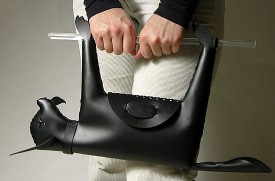 There is a report that Toshiba is developing software that will allow people to take a picture of the bar code label of many products, send it to a related service and quickly receive back information related to the product. The data the service returns? From blogs. Yep, Toshiba will send back summary information on how many blogs gave the product positive and negative reviews. Related product information will also be displayed. There is a report that Toshiba is developing software that will allow people to take a picture of the bar code label of many products, send it to a related service and quickly receive back information related to the product. The data the service returns? From blogs. Yep, Toshiba will send back summary information on how many blogs gave the product positive and negative reviews. Related product information will also be displayed.
There is no information now about how Toshiba will go about gathering and analyzing blog data, and whether the data will need to be in a structured format or not. It is also unclear as to whether this will initially launch only in Japan or worldwide. I think one of the bigger challenges of the service is pairing the blog data with the bar code. As the service launches, sometime in 2006, I’ll be all over this if I can get access to it. Products covered are primiarily consumer electronics products, food, books, CDs, DVDs and cosmetics. Bar codes on about 400,000 products can be scanned. When the cellphone camera shoots the bar code, the information is automatically sent to a server, which then searches through blogs, or diary-like Web sites, for reviews. About 10 seconds later, a summary will be displayed on the cellphone screen reporting how many blogs were positive and how many were negative. The actual comments on the blogs can also be viewed as well as information on related products. Toshiba categorized about 500,000 Japanese words into fields such as travel and culture, and classified words related to evaluation as good or bad. The fact that Toshiba is looking to edge, consumer driven content instead of a proprietary database to gather product information is stunning. Two thumbs up. I hope it works.
This was seized 4 u by Reseizer
|

 ;
;















 There is a
There is a Office Live will is believed to be the standard once it launches. Until then, there is a window for services like Airset (and others I’ve seen but can’t write about yet) to gain customer traction.
Office Live will is believed to be the standard once it launches. Until then, there is a window for services like Airset (and others I’ve seen but can’t write about yet) to gain customer traction.